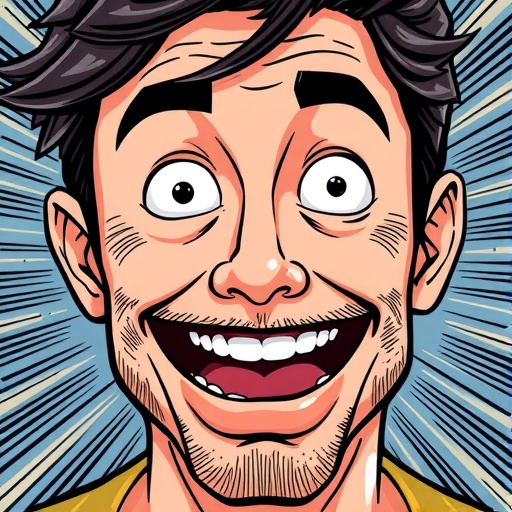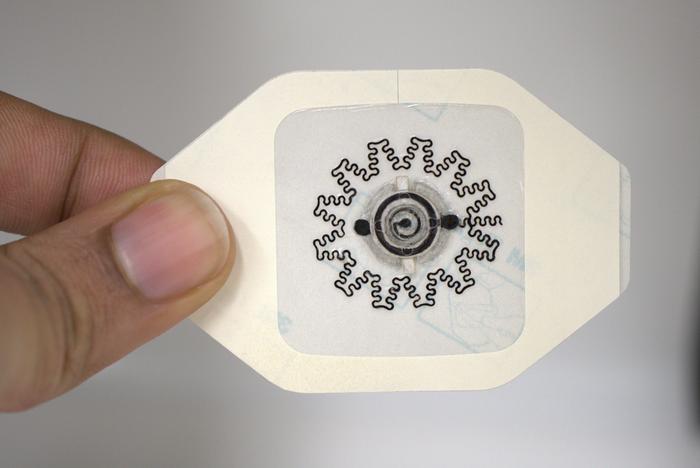Artificial intelligence (AI) has made significant strides in various fields, and the world of comic creation is no exception. In a recent study published in “Discover Artificial Intelligence,” researcher J. Chen explores the transformative potential of AI in the realm of comic artistry, specifically focusing on the exaggeration method of face images— a technique that can elevate both the humor and expressiveness of comic characters. This application of advanced technology not only highlights the intersection of art and science but also opens the door to new creative possibilities for artists and writers alike.
Comics, as a medium, have long relied on visual exaggeration to convey emotions and narratives effectively. The playful distortion of facial features has been a hallmark of the genre, allowing artists to communicate complex feelings in a simplistic and humorous manner. With the introduction of AI, creators can further enhance this technique, utilizing algorithms that can analyze and generate exaggerated facial features in a way that feels fresh and innovative. This study by Chen delves into the mechanics of these algorithms, shedding light on how they can mimic and amplify the highly stylized characteristics found in traditional comic art.
One of the chief advantages of integrating AI into comic creation is the speed at which artists can produce their work. Traditional methods of drawing and exaggeration can be time-consuming, requiring artists to sketch, ink, and color manually. However, with AI tools, these processes can be accelerated significantly. AI-driven software can generate initial sketches based on specific parameters provided by the artist, enabling creators to iterate quickly and focus more on storytelling rather than technical constraints.
Moreover, the research outlines how AI can analyze vast datasets of comic imagery to learn what constitutes effective exaggeration. By doing so, these algorithms can create models that artists can reference or modify, ensuring that their work resonates with established styles while adding a contemporary twist. This capability signals a paradigm shift in how comics are produced, where the collaboration between human creativity and machine learning becomes a foundational element of the artistic process.
The implications of AI in comics extend beyond mere aesthetics. Chen discusses how this technology can also democratize comic creation, providing tools that individuals without formal art training can use. By simplifying the drawing process, AI allows aspiring comic creators to express their ideas, leading to a broader range of voices and narratives within the medium. This democratization fosters inclusivity, which is vital in an art form that reflects diverse experiences and cultures.
In addition to visual exaggeration, the research also touches on the role of AI in narrative development. Just as algorithms can enhance visual elements, they can also analyze plot structures and character arcs found in successful comics. This analysis can help writers create more engaging stories by suggesting narrative twists or character developments that align with reader preferences. The integration of AI in narrative design is a fascinating prospect, merging creativity with analytical acumen to produce compelling comic book storylines.
The study does not shy away from discussing potential challenges associated with AI in comic creation. One concern raised by Chen is the question of originality. As algorithms learn from existing works, the risk of producing derivative art arises. Artists and creators may find themselves navigating a fine line between inspiration and imitation. To counteract this, Chen emphasizes the importance of maintaining a strong human element in the creative process. While AI can serve as a valuable tool, the unique perspectives and interpretations of individual artists should guide the final output.
Furthermore, ethical considerations surrounding the use of AI in art are examined. As AI-generated images become indistinguishable from human-created ones, the issue of ownership and copyright comes to the forefront. Chen argues for an ongoing dialogue within the artistic community regarding how to acknowledge and define the contributions of AI alongside those of human creators. Establishing clear guidelines in this area will be essential as the technology continues to develop.
The potential for AI to revolutionize comic creation is undeniable, and Chen’s research presents an optimistic view of the future. The fusion of artistic intuition and machine learning not only enhances the quality and efficiency of comic production but also invites conversation about the nature of creativity itself. As AI tools become increasingly sophisticated, they may inspire new genres and formats within comics, expanding the boundaries of what the medium can achieve.
In summary, Chen’s study elucidates the practical applications of AI in comic creation, particularly through the lens of visual exaggeration. By analyzing facial images and applying AI techniques, creators can produce innovative comics that engage audiences on deeper emotional levels. This research heralds an exciting era for comic artists and storytellers, providing resources that support creativity while also sparking necessary discussions about originality and ethics in a rapidly evolving digital landscape.
As the comic industry continues to adapt to these advancements, the collaboration between human artistry and AI could pave the way for entirely new forms of storytelling. Future creators may find themselves wielding powerful tools that allow them to push artistic boundaries further than ever imagined. Ultimately, this innovative convergence of art and technology stands to enrich the comic form, ensuring its relevance and vitality in an increasingly digital age.
With AI at the helm, the future of comic creation looks not only brighter but also more expansive, challenging artists to think differently about how they express humor, emotion, and narrative through their work. As these technologies advance, we will undoubtedly witness a new wave of comics that reflect the unique synergy of human ingenuity and artificial intelligence, forever changing the landscape of this beloved art form.
Subject of Research: The application of artificial intelligence in comic creation.
Article Title: The application of artificial intelligence in comic creation: taking the exaggeration method of face images as an example.
Article References:
Chen, J. The application of artificial intelligence in comic creation: taking the exaggeration method of face images as an example.
Discov Artif Intell 5, 300 (2025). https://doi.org/10.1007/s44163-025-00563-8
Image Credits: AI Generated
DOI: 10.1007/s44163-025-00563-8
Keywords: Artificial Intelligence, Comic Creation, Exaggeration Method, Facial Images, Artistry, Digital Tools, Inclusivity, Narrative Development, Copyright, Originality.
Tags: advancements in comic artistryAI in comic creationAI-generated comic featuresalgorithms for facial feature distortioncreative possibilities in visual storytellingemotional communication in comicsexpressiveness in comic charactersfacial exaggeration in comicshumor enhancement through AIinnovative techniques for comic artistsintersection of art and technologytransformative potential of AI in art






